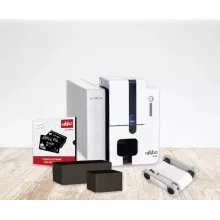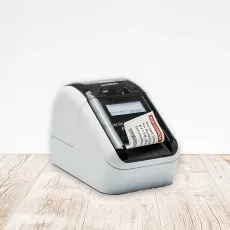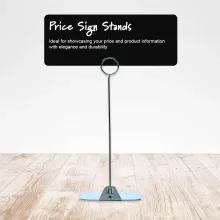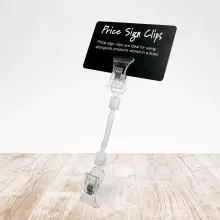
An Introduction to Natasha’s Law
For those who suffer from allergies, eating whilst out and about can be a minefield. Current allergen laws are ambiguous at best, and that means many food products aren’t labelled correctly. Whilst guidance has been published by the UK government, it isn’t a legal requirement to follow the advice, and as of June 2021, the only requirement for allergen labelling is that warnings must be posted around the shop with no requirements for allergens to be printed on the packaging. Most of the time, these in-store warnings have the potential to go unnoticed by the people who need them most.
With over 2 million people in the UK living with severe food allergies (excluding those who are undiagnosed and those who suffer from intolerances), Natasha’s Law is important legislation that is being introduced with the intention of preventing allergy sufferers from falling unwell due to incorrect or inadequate labelling on food products.
What Is Natasha’s Law?
Also known as the UK Food Information Amendment, Natasha’s Law has been introduced to ensure that pre-packaged food – specifically ‘Prepacked Foods for Direct Sale’ or ‘PPDS’ – contains correct and clear labelling to prevent those with severe allergies from accidentally eating something that might cause them to suffer an allergic reaction.
Why Was Natasha’s Law Introduced?
Natasha’s Law was passed through the government after strong campaigning from the parents of Natasha Ednan-Laperouse, a 15-year-old girl who sadly died after eating a baguette that contained sesame, something she was severely allergic to.
Natasha had lived with allergies for her entire life but died after eating a baguette that she had purchased from Pret A Manger in an airport. She was reassured by the lack of labelling on the packaging of the baguette and therefore safely assumed that there were no major allergens in the ingredients list, but it was later discovered the food contained sesame.
Her death could have been prevented with correct food labelling, and that’s why her parents, Tanya and Nadim Ednan-Laperouse, have been fighting for significant change to current laws surrounding allergen advice on food packaging.
The UK government introduced Natasha’s Law in 2019 to protect other allergy sufferers from falling victim to poor labelling on the food they purchase.
What Does Natasha’s Law Cover?
The UK Food Information Amendment covers the sale of foods that are ‘Prepacked for Direct Sale’ – food that is packed on the same premises from which it’s sold.
The law does not apply to food that is made to order or served in packaging that is open and able to be altered, such as cardboard trays or Styrofoam boxes.
When Is Natasha’s Law Coming Into Effect?
Natasha’s Law will come into effect in England, Wales, and Northern Ireland from 1st October 2021 with similar rules expected to follow in Scotland, but it is important to start preparing as soon as possible. Ensure you have all necessary equipment and that staff are adequately trained well ahead of time, and consider undertaking a trial run to allow any necessary changes before the law has officially come into force.
What Information Is Mandatory?
On the 1st October 2021, Natasha’s Law meant it was a legal requirement for all PPDS food to have clear labelling on the packaging. The label must contain the name of the item and a full list of the ingredients, with allergens emphasised in bold, italics, or a different colour font.
How Many Food Allergens Are There And What Are They?
There are 14 major food allergens that are required to be listed according to the law. These are:
• Celery
• Cereals containing gluten (such as barley and oats)
• Crustaceans (such as prawns, crabs, and lobsters)
• Eggs
• Fish
• Lupin
• Milk
• Molluscs (such as mussels and oysters)
• Mustard
• Peanuts
• Sesame
• Soybeans
• Sulphur dioxide and sulphites (at a concentration of more than ten parts per million)
• Tree nuts (such as almonds, hazelnuts, walnuts, Brazil nuts, cashews, pecans, pistachios and macadamia nuts)
These must also be listed if the allergens are present in any additives, processing aids, or any other substances that help to make the final product.
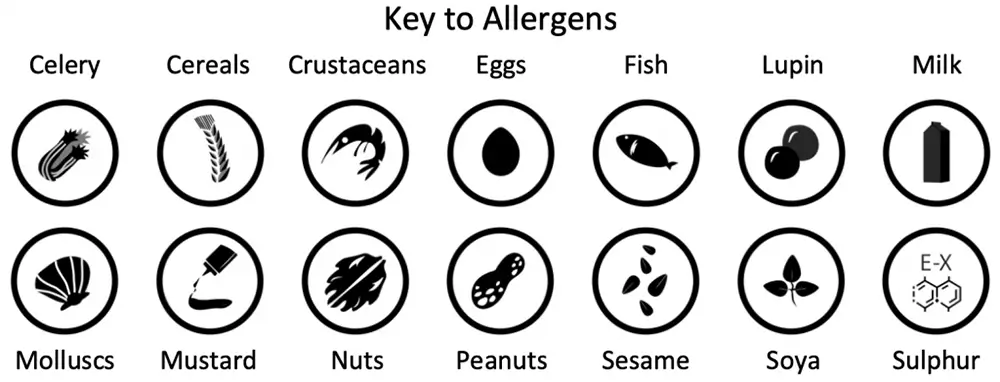
What Do I Need To Do To Comply With Natasha’s Law?
For full compliance with Natasha’s law, ensure that the packaging of all PPDS food clearly states:
• The name of the food product
• A full list of the ingredients with allergens emphasised in bold, italics, or a different colour
The information must be clear and legible, and not covered by any folds or creases. It must also be accessible for those with visual impairments. The ingredients list must be printed in a font with:
• An x-height with a minimum of 1.2mm
• If the surface area of the label is less than 80cm2, a minimum x-height of 0.9mm
It’s also important to note that allergen information must be available at every point in the supply chain.
Labels should be added to the outer packaging before the food product is displayed.
What Happens In The Event Of Non-Compliance?
Compliance with Natasha’s Law will be monitored during visits from environmental health officers, alongside their current duties. Where necessary, officers will issue enforcement and change orders and escalate if required.
Proven breaches of the law could lead to your business facing legal action, and you may suffer from reputational damage as experienced by Pret A Manger.
5 Ways to Prepare for Natasha’s Law
As of 1st October 2021, new food labelling requirements came into force in England, Wales, and Northern Ireland. This is called Natasha’s Law. It requires all businesses that sell ‘Pre-Packed Foods for Direct Sale’ to feature visible, accessible allergen labelling on the packaging of the items.
Before the law (also known as the UK Food Information Amendment) comes into force, there are 5 things should do to ensure you’re meeting the legal requirements. Failure to do so may result in monetary penalties and reputational damage.
1. Check if your food products are classed as ‘Pre-Packed for Direct Sale’
The law only covers food items that are considered ‘Pre-Packed for Direct Sale’. This means products that are packed on the same premises from which it is later sold. There is currently no specific guidance for what foods fall under the PPDS label, but the Natasha’s Law legislation gives the following advice to consider:
• Items of food that are presented to consumers in packaging that is either wholly or partially enclosed in a way that makes it impossible to alter the food without visibly opening or changing the packaging
• Food products that are packaged before the consumer orders it
• Food that is packaged in the same place as it is later sold, including items packaged by a business on the same site it is sold or sold from temporary or moveable premises such as food trucks
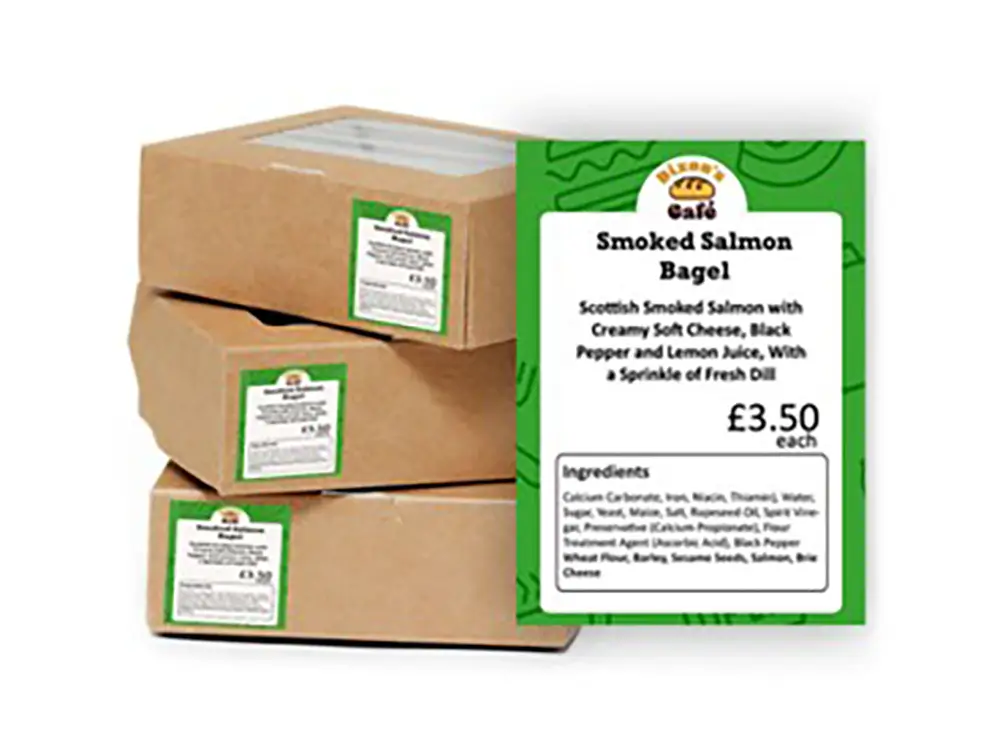
Natasha’s Law labelling guidance does not apply to food that is made to order or served in open packaging, such as cardboard trays or Styrofoam boxes.
To prepare for the introduction of Natasha’s Law throughout the UK, you should consider whether the products you sell are considered to be PPDS. Each item must be considered on a case-by-case basis, and if you’re not sure, it may be best to provide allergen labelling anyway.
2. Invest in a compliant solution
If you sell PPDS, you need to ensure that you are following the correct guidelines. According to Natasha’s Law, you must ensure the following:
• All PPDS food products must clearly state the name of the product, along with a full list of ingredients with allergens emphasised in bold, italics, or a different colour
• The information is clear and legible, and not impaired by any folds or creases
• That the information is accessible for those with visual impairments
• The information must be printed in a font with an x-height of at least 1.2mm, or if the surface area of the label is less than 80cm2, a minimum x-height of 0.9mm
• Allergen information is available from every point in the supply chain
• Labels are added to the outer packaging of the product before it is displayed
To do so, you must have the correct equipment, including hardware and software.
PriceSignPrinters intelligent food labelling bundle allows for organisation and storage of your products’ ingredients list, which you can then send to print at the click of a button to produce your labels. Everything you need is included in this bundle, with 1,000 12x6cm labels pre-printed with your logo ready to use as soon as you’ve set it up.
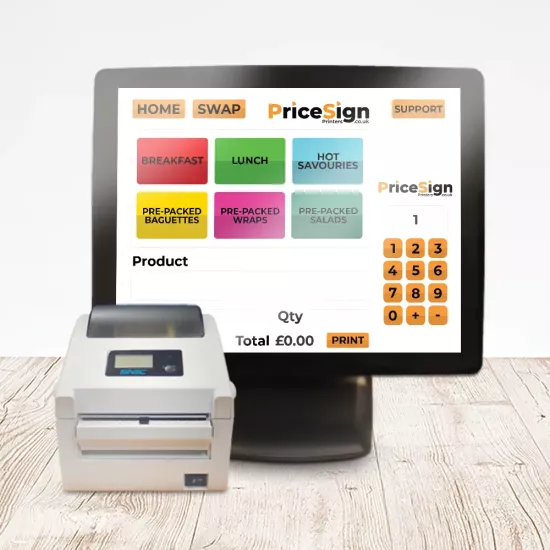
3. Prepare your ingredient lists
It’s likely that you sell several different products, some of which may be seasonal. To prevent any last-minute stress, sit down ahead of time to gather the list of ingredients for each product. It’s also important that you contact your suppliers, as you must also be able to provide the ingredients for certain elements of your food, such as bread.
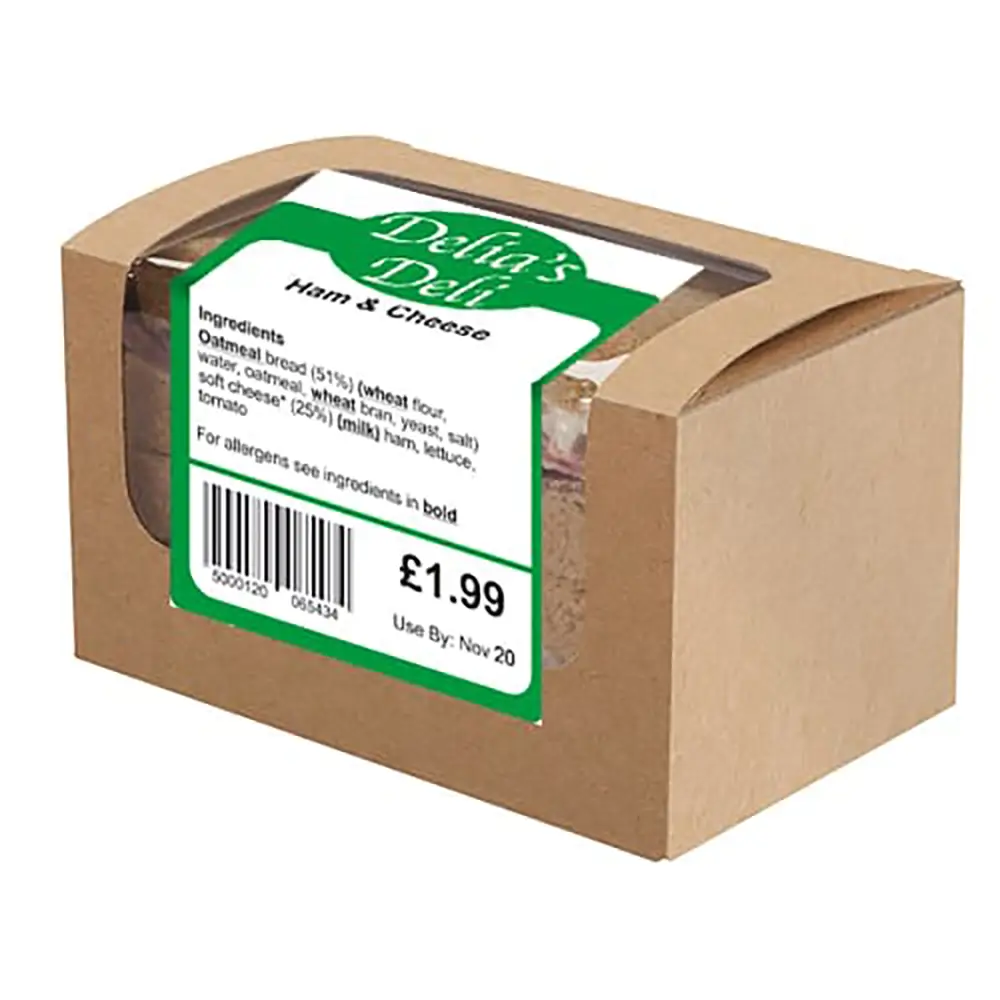
Labelling software can be used to easily and efficiently create and store multiple ingredients lists for your products, so they’re ready to print at the click of a button. You’ll also be able to store, view and print the ingredients labels for your seasonal products, to save you the trouble of trying to remember the details from the year before.
Our exclusive food labelling printer bundle is specifically designed to ensure you can comply with Natasha’s Law requirements, with allergens printing in bold, underlined text.
4. Train your staff
Your staff should be fully aware of Natasha’s Law and all the steps you need to take to comply, as they will likely be involved at some point in the process. Make sure they know what the new law will apply to and how your business must adapt for compliance, and let them know of the steps you’re taking – such as any new software or printers – that you will be using.
You may also choose to appoint a member of your staff as a ‘champion’ to uphold Natasha’s Law allergen requirements. This means that they are responsible for inputting any information into the software and printing the labels to stick on food packaging. They can also make customers aware of the changes, which leads to reassurance and trust.
Provide ongoing training to your staff to ensure that compliance never slips and your customers can always feel safe.
5. Test it out
Before the law comes into effect on 1st October 2021, ensure you have all the correct steps in place for compliance and start a trial period. Evaluate and audit each step in the process, including ingredient checks from suppliers, having ingredient lists for all of your PPDS products, and proper label printing. You should also ensure that the processes your staff follow are completely up to date.
If you have a chain of stores, pick one location to trial your compliance. It will allow you to see any issues or areas of improvement ahead of time.
The Dangers of Non-Compliance with Natasha’s Law
With Natasha’s Law coming into effect soon, it’s important to ensure you are compliant with all regulations. They will be legally enforced by your local environmental health services, with compliance monitored during their regular inspections.
It’s important to comply with Natasha’s Law, both for your business and for your customers. After Natasha’s tragic death, Pret A Manger (the café where she purchased the baguette) suffered from heavy reputational damage. Natasha’s case wasn’t the only instance where a customer had experienced a severe allergic reaction from a Pret A Manger product, and for the second case, they were taken to court.

Despite the company’s CEO releasing an apology for Natasha’s death and implementing allergen labels across their products, Pret A Manger still saw a heavy force in the name of reputational damage. Many media outlets questioned why it took over two years after Natasha’s death before the company changed their packaging requirements, and it came to light that it had been warned about its allergen labelling due to nine previous allergen incidents in the year prior to Natasha’s death.
Contrary to what we have all heard at one point in our lives, not all press is good press. The limelight being shone on Pret A Manger’s poor allergen management has caused a number of issues, and it’s likely that customers with severe allergies will avoid the company at all costs. Their lax response to the case, and the apparent lack of staff training, will stick in the minds of many – and this is before any laws come into place.
Once Natasha’s Law becomes a legal requirement, businesses that do not comply will also face fines and other legal punishments alongside potential reputational damage. If a health inspector sees any issues with the solution you’ve put in place, you may face fines of up to £5,000 per instance of non-compliance. For many small businesses, mistakes can be incredibly costly.
The Importance of Training Your Staff
To ensure you are achieving full compliance with Natasha’s Law legislation, you need to ensure that all levels of your business are knowledgeable and able to perform duties to comply with the law. This will be helpful for your business and the practices you follow when it comes to creating your allergen labels for your products, as well as for customers when they visit your premises.
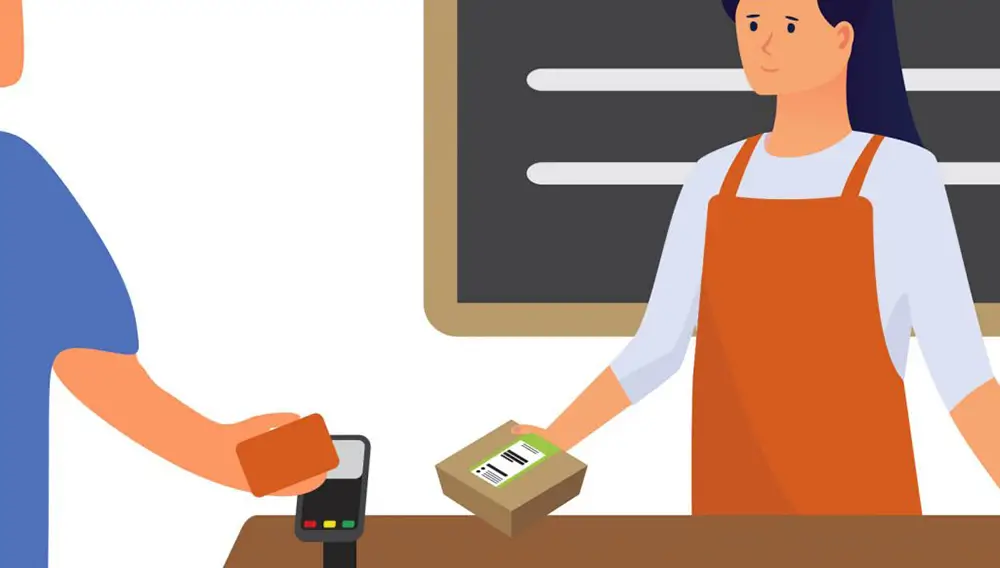
Food allergies are a major issue for over 2 million people living in the UK, and for those who suffer from them, eating food they haven’t prepared themselves can be a minefield. Any allergen labelling prior to Natasha’s Law coming into effect was simply guidance and was not legally binding. That meant many food retailers – such as Pret A Manger, in the case of Natasha Ednan-Laperouse – simply placed signs around their shops that advised customers to ask servers for allergen information.
Whilst most allergy sufferers would follow this advice, there are also things that can lull them into a false sense of security. In Natasha’s case, this was a lack of allergen warnings on the packaging of the baguette she purchased.
The introduction of Natasha’s Law brings reassurance to those who suffer from allergens by requiring all PPDS products to clearly state a list of all ingredients on the outer packaging, with any of the 14 allergens present to be contrasted from the regular font – either in bold, italics or in a different colour.
Allowing any allergy sufferers to have the autonomy to buy food whilst out and about is a big step in the right direction, as it’s likely they’ve experienced very little of this before – if at all.
And you can also go a step further and reassure them by appointing one or two of your members of staff to be ‘Allergy Champions’. Giving them the responsibility to oversee food allergy labelling means a greater likelihood of full compliance from your business, and your customers will know who to talk to if they need allergen information.
It also means your staff will continue to have a high level of training on allergen handling, and your customers will feel reassured by your recognition and commitment to the issues faced by allergen suffers every day.
Ensuring your staff are fully trained and up to date with any further developments will also reduce the risk of any instances of non-compliance with Natasha’s Law. Not only will you avoid any potential legal repercussions, but you will also avoid the heavy reputational damage that Pret A Manger suffered after the death of Natasha and the other allergy sufferers that experienced reactions after eating food sold by the food retailer.
And although Natasha’s Law only specifically covers foods that fall under the PPDS label, it is recommended that you provide allergen labelling for all of your products. Although there may be a risk of cross-contamination with products that aren’t packaged, you can easily list this and any other allergens that are present in the foods with plastic price signs. They are easy to display and are entirely food-safe, and your customers will feel reassured if they know exactly what is in their food.
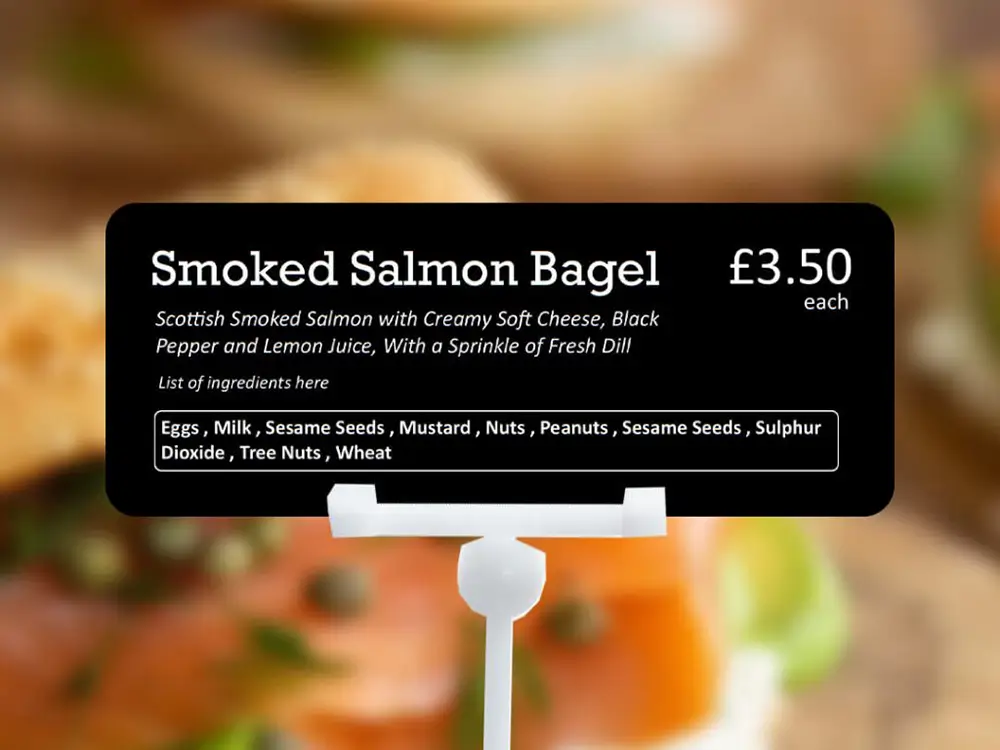
Tips for Ensuring Natasha’s Law Compliance
With Natasha’s Law in effect, you need to consider how you are going to continue to comply with the allergen labelling laws with all new food products you introduce to your business. Preparation is key, and we’ve put together a list of tips to help.
1. Keep Your Products Up to Date
It’s likely that you’ll add new items to your menu on a semi-regular basis, so it’s important that you ensure the creation of ingredients lists before you stock them on your shelves. Prepare your labels prior to launching them to your customers, so you’re not panicking at the last minute when it comes to packaging.
2. Train New Staff
As you take on new staff, it’s important that their initial training includes all the information they need to know about Natasha’s Law, even if they won’t be handling the packaging of products.
Holidays, job vacancies, and other absences may mean staff are required to fill other roles that they may not usually, and a lack of training may result in mistakes being made. Any non-compliance can lead to legal repercussions, such as fines, as well as reputational damage – and the risk of one of your customers suffering from ill health as a direct result of incorrect labelling.
Training your staff on allergen labelling laws upon the start of their employment with you will reduce the risk of non-compliance.
3. Don’t Forget Why
In the midst of the preparation for Natasha’s Law, the messaging and reasoning of the legislation coming into force can get lost. It’s important to remember that this law was born from the untimely death of teenager Natasha Ednan-Laperouse, and the thousands like her who have suffered after eating incorrectly labelled foods that contain allergens.
You never know who may come into your shop and what allergens they have, and that means you don’t know the effect that incorrectly labelled PPDS foods could have on them. Having a labelling solution in place to identify and display allergens can be a relief for many customers, and potentially lifesaving for others.

